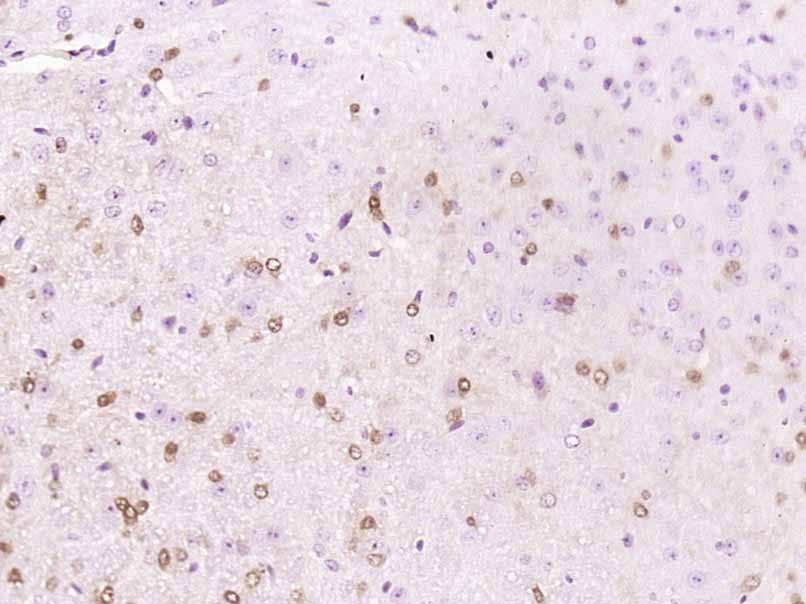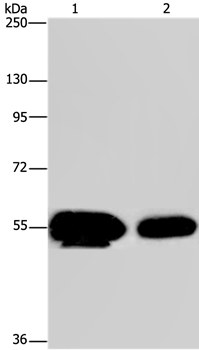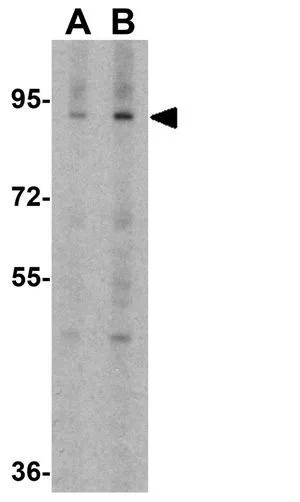
WB analysis of human brain (cerebellum) lysate using GTX89063 APBA1 antibody, Internal. Dilution : 0.1microg/ml Loading : 35microg protein in RIPA buffer
APBA1 antibody, Internal
GTX89063
ApplicationsWestern Blot
Product group Antibodies
ReactivityHuman
TargetAPBA1
Overview
- SupplierGeneTex
- Product NameAPBA1 antibody, Internal
- Delivery Days Customer9
- Application Supplier NoteWB: 0.1-0.3microg/ml. *Optimal dilutions/concentrations should be determined by the researcher.Not tested in other applications.
- ApplicationsWestern Blot
- CertificationResearch Use Only
- ClonalityPolyclonal
- Concentration0.50 mg/ml
- ConjugateUnconjugated
- Gene ID320
- Target nameAPBA1
- Target descriptionamyloid beta precursor protein binding family A member 1
- Target synonymsD9S411E, LIN10, MINT1, X11, X11A, X11ALPHA, amyloid-beta A4 precursor protein-binding family A member 1, adapter protein X11alpha, adaptor protein X11alpha, amyloid beta (A4) precursor protein-binding, family A, member 1 (X11), mint-1, neuron-specific X11 protein, neuronal munc18-1-interacting protein 1, phosphotyrosine-binding/-interacting domain (PTB)-bearing protein
- HostGoat
- IsotypeIgG
- Protein IDQ02410
- Protein NameAmyloid-beta A4 precursor protein-binding family A member 1
- Scientific DescriptionThe protein encoded by this gene is a member of the X11 protein family. It is a neuronal adapter protein that interacts with the Alzheimers disease amyloid precursor protein (APP). It stabilizes APP and inhibits production of proteolytic APP fragments including the A beta peptide that is deposited in the brains of Alzheimers disease patients. This gene product is believed to be involved in signal transduction processes. It is also regarded as a putative vesicular trafficking protein in the brain that can form a complex with the potential to couple synaptic vesicle exocytosis to neuronal cell adhesion. [provided by RefSeq, Jul 2008]
- ReactivityHuman
- Storage Instruction-20°C or -80°C,2°C to 8°C
- UNSPSC12352203








